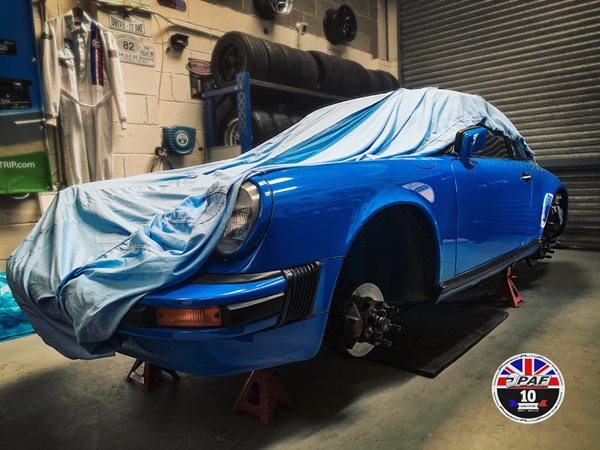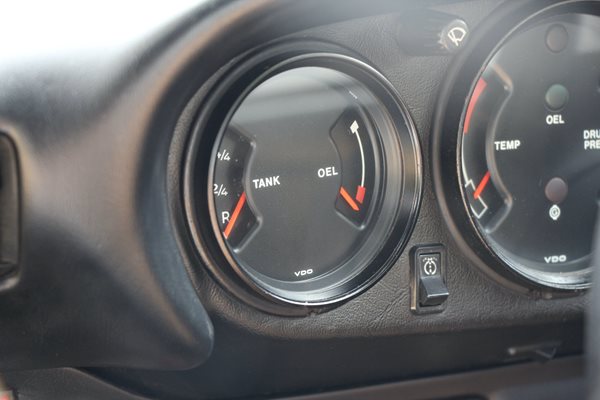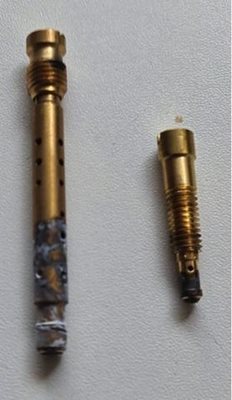Winter Hibernation.
Most of us would rather carry on driving our cars over the winter months but winter happens and with it comes wet weather, icy roads and most importantly salt and grit. Hibernating your pride and joy may therefore seem like the only safe option till fair weather is back again but leaving a car standing for long periods of time can actually also prove very damaging for it.
.jpg?lang=en-GB)
Under normal circumstances, it is recommended to drive your car every two to three weeks. Any less than this will increase the likelihood of problems flaring up when you plan to get back out on the road. It Is however perfectly possible to leave your car in a garage or parked outside for months with no problems but the longer you leave it, the greater the chance of issues developing and the more measures you should take to mitigate the risk.
I am often asked what is the best way to store a car in the winter and the Internet is full of advice (often contradicting) on that subject.
Aside from driving it regularly if possible, here is my short 12 steps guide to help you ‘’hibernate’’ your car safely (I fully appreciate that some may disagree, some may add other steps to it but I hope that this will at least give most owners some good pointers to make sure their pride and joy is ready for the return of good weather.)
1. Get rid of grime
Car storage rule number one is to clean your car. Dirt, dead bugs and bird poo can be acidic and slowly eat away at paint and chrome work so wash, polish and wax your car thoroughly before laying it up. Clean the wheel arches and undercarriage, and if you have one, use an air compressor to blast away water beads. During this process water can settle inside door jams, around rubber seals, trims and mirror surrounds so check these areas and if necessary use a microfiber towel or hair dryer to soak up the excess. Also use the opportunity to clean and feed any leather surfaces
.jpg?lang=en-GB&width=800&height=597)
X-mas season is the best time of the year to enrol the help of an Elf to wash your car.
2. Reduce its rodent appeal
Have a good sweep for food that’s been forgotten about. If you don’t find it, a hungry rodent looking for a place to eat and sleep, will.
Mice and rats have a taste for insulation and air filters too, so block entry points such as the exhaust pipe with steel wool or a rag, and close all air vents. Evicting unwelcome visitors in spring is not a job you want to be doing.
.jpg?lang=en-GB&width=400&height=565)
Not only are these carburettor plugs bright enough not to forget taking them off, they will also literally bring a smile to your car.
3. Manage humidity
Moisture is your number one enemy and you should always make sure that your garage has good air flow.
Option 1: Use a dehumidifier but don’t set it too high as it can draw the moisture out of everything around it (recommendation is a 55% humidity).
Option 2 : You can also place silica gel packs in the foot wells to absorb moisture and leave a window open to prevent condensation or a musty smell.
.png?lang=en-GB&width=300&height=200)
See Club Shop here : Car Dehumidifying Crystals
Option 3: You can also use an Air-Chamber or Cair-O-Port (see here) . These are fitted with filtered fans circulating the air and keeping your car dry and free of condensation.
Do not fold your soft top roof as this is a perfect environment for growing mould.
If you use a car cover, make sure it’s lightweight, breathable and preferably tailored to your car, or elasticated to fit snugly.
See Club’s shop here : Car Covers
4. Inflate your tyres
Going nowhere takes its toll on tyres, but there are several ways to prevent what’s known as flat-spotting – where the tyre loses its shape.
Option 1: You can for example inflate tyres to a higher pressure than usual when putting your car away for the winter, but be sure not to exceed the maximum tyre pressure relevant to your vehicle. The changes in temperature often causes the air pressure in tyres to decrease so by inflating them, there is less chance of this happening. It is then a good idea to move the car a little regularly, rotating the wheels every so often to stop flat spots appearing on the tyres.
Option 2: Jacking your car up or using blocks or stands is also a good option, as this will take weight off the tyres and suspension

When leaving your car on axle stands, I always recommend to take the wheels off to avoid any strain on the suspensions components.
Option 3 : You could also invest in tyre trainers that also help prevent flat spotting, if the car cannot be moved easily, see here : Tyre Trainers.
5. Don’t use the handbrake
Leaving the handbrake on risks fusing the brake pads to the discs. Use wheel chocks to stop your classic from rolling away, check your brake fluid, and leave the car in gear.
6. Do change the engine oil
When storing a car on a long-term basis (more than three months), you should carry out an oil change before laying it up as contaminants in used oil can damage the engine.
.jpg?lang=en-GB&width=400&height=600)
During regular usage the impurities that build up in oil as a by-product of fuel combustion are driven off, but if left to linger during the hibernation period they will do their corrosive worst. Used oil also contains humidity so change the oil and the filter, check the level then run the engine to circulate.
7. Fill it up
This is a topic that divides enthusiasts. Some say it’s best to fill the tank to minimise the amount of petrol exposed to the air, and add a stabilising product which will help to ward off corrosion, oxidation and keep the fuel in grade. Others, including the RAC, suggest leaving the tank as good as empty, then add a splash of fresh fuel when bringing your car out of storage, before filling it entirely. Personally I would recommend the former and here is why.

You have surely noticed condensation on the windows inside your car on a cold winter morning? This is simply water in a vapour state turning into water in a liquid form when coming into contact with a cold surface (your windows). The same phenomenon takes place in your fuel tank and an empty or half full tank will see condensation forming, roughly to a ratio of 1g of water for 1 litre of air.
Easy conclusion then, fill up your tank !!!!
Well actually, not that simple and there is another important side to this argument.
Modern cars are fitted with ‘’plastic’’ fuel tanks that react much better to modern fuels - which in turns do not contain anti oxidation additives any more (since tanks are not in metal anymore, these are no more required).
But in classic cars, fuel tanks being in metal (usually untreated), humidity will form inside the tank and could lead to oxidation and rust. This will eventually find its way to the bottom of the tank, will mix with fuel and can clog your filters, injectors or carburettor jets.
The presence of Ehanol in modern fuels is also a big consideration. Being hygroscopic (retains humidity) the more fuel in your tank and the less room for condensation and oxydation.
But what about fuel lines and carburettors?
We recently carried a real life test on the impact of Ethanol on a carburettor and just to give you a quick idea, this is what happens to Weber jets in a carburettor left without running for 6 months!!!

“So I need a full tank but nothing in my fuel lines or carbs !!! “
That's easy is you have a separate switch for your fuel pump like we fit on most race cars (switch the pump off before turning the engine off to drain you fuel system) but on a normal set up/car this is a little more tricky to achieve.
The current school of thoughts seems to be to add one if these fuel stabilizers in your tank. Personally I am not really convinced about these, but I guess it can’t do much harm so why not.
Much better in my view is to run your car / engine regularly. Remember that humidity, oxidation etc do not happen overnight. Depending on conditions and temperature fluctuations, fuel can be store between 3 to 10 months before loosing its properties (will start turning a reddish colour, change of smell and loose some of its octane and the less fuel in the tank, the quicker this will happen).
8. Disconnect or charge the battery regularly
A battery will naturally discharge over time and cold can make things even worse.
Option 1: The low-tech solution is to disconnect it of course (either via a cut off switch which actually can double up as a very good anti theft trick, or simply by taking the leads off it). If your car is kept in a place where temperatures drop below zero, take the battery out of the car and store it in a cool place (but don’t store it in a place above 15°c).
Option 2 : You second option is to use a smart charger which will monitor the battery, putting it through cycles and keep it 95 to 100% charged. See here : Ctek Conditioner

Option 3: Your final option is to recharge your battery, either with a charger or by running the engine (roughly every three weeks)
9. A little grease can go a long way.
Make sure you grease steering components shafts, suspensions joints, door hinges etc. For specific grease points refer to your car manufacturer’s handbook or workshop manual.
You also need to treat rubber seals with silicone grease to help maintain their sealing properties.
10. Lift wipers from glass
My final tip for car storage advice is as simple as they come. Rubber has a tendency to fuse itself to glass when left unattended so it’s vital to keep the two apart when being left alone for so long – otherwise the rubber will deteriorate and become useless for wiping away rain. Either lift the wipers up and off the windscreen entirely, or insert a piece of cloth or paper to create a barrier between them.
11. Run the engine
Although I am not really a big fan of running a car for too long being stationery, firing up your car and letting it run for 15 to 20 minutes in winter months on a regular basis (every 3 weeks) will do it more good than leaving it alone all together. Making sure that fuel and oil is circulating will prevent seals from perishing/drying out for example. And if you are not using a battery conditioner, it will help keeping it charged up.
12. Make a note of what you’ve done
Write down all the steps you’ve taken on a notepad, so when the time comes to restart your car in the spring, you won’t accidentally end up damaging it by, for example, forgetting to pull out the rag you’ve left in the exhaust.
Franck MARIE
911SC Register Secretary